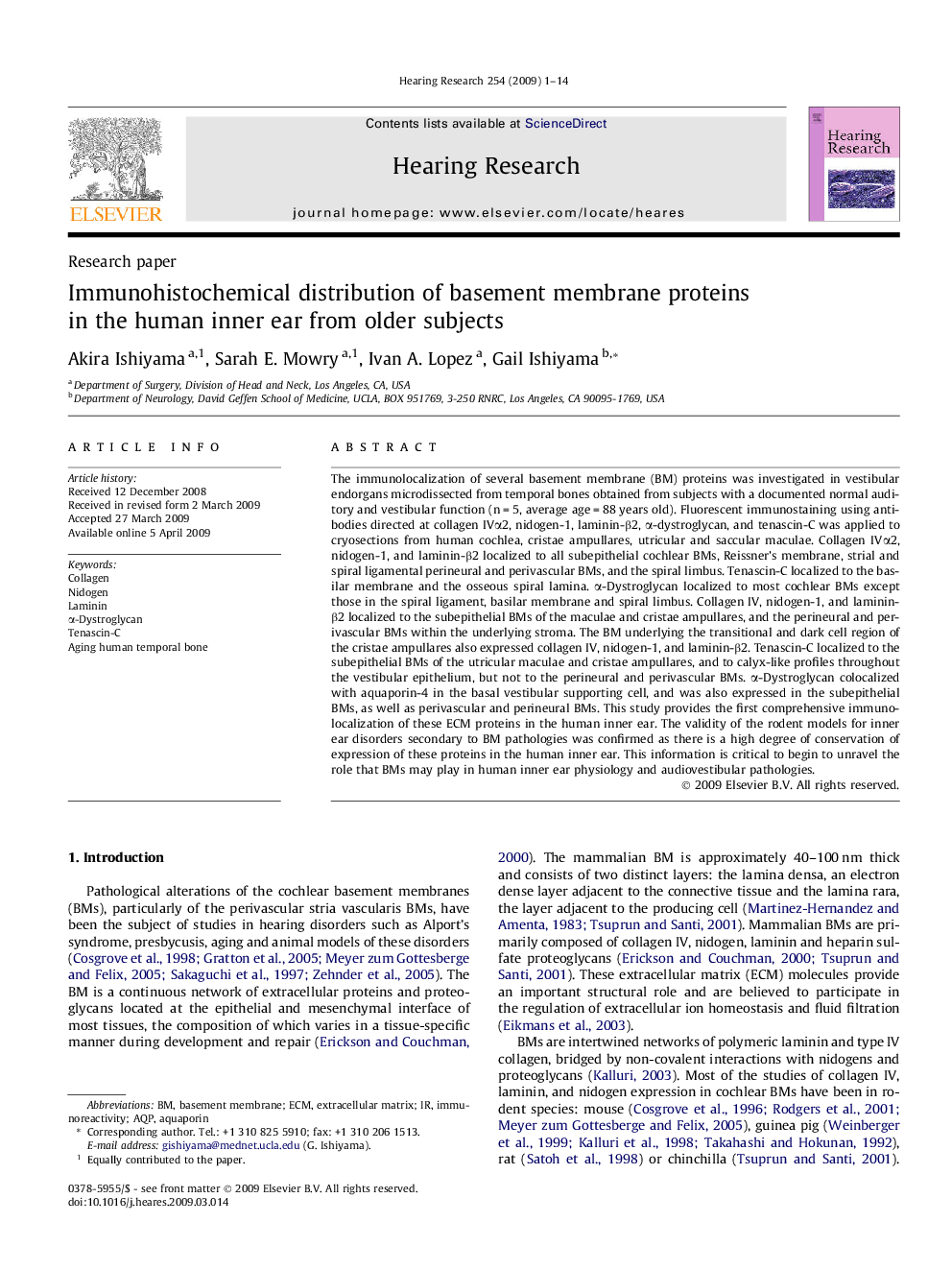| کد مقاله | کد نشریه | سال انتشار | مقاله انگلیسی | نسخه تمام متن |
|---|---|---|---|---|
| 4355877 | 1615646 | 2009 | 14 صفحه PDF | دانلود رایگان |

The immunolocalization of several basement membrane (BM) proteins was investigated in vestibular endorgans microdissected from temporal bones obtained from subjects with a documented normal auditory and vestibular function (n = 5, average age = 88 years old). Fluorescent immunostaining using antibodies directed at collagen IVα2, nidogen-1, laminin-β2, α-dystroglycan, and tenascin-C was applied to cryosections from human cochlea, cristae ampullares, utricular and saccular maculae. Collagen IVα2, nidogen-1, and laminin-β2 localized to all subepithelial cochlear BMs, Reissner’s membrane, strial and spiral ligamental perineural and perivascular BMs, and the spiral limbus. Tenascin-C localized to the basilar membrane and the osseous spiral lamina. α-Dystroglycan localized to most cochlear BMs except those in the spiral ligament, basilar membrane and spiral limbus. Collagen IV, nidogen-1, and laminin-β2 localized to the subepithelial BMs of the maculae and cristae ampullares, and the perineural and perivascular BMs within the underlying stroma. The BM underlying the transitional and dark cell region of the cristae ampullares also expressed collagen IV, nidogen-1, and laminin-β2. Tenascin-C localized to the subepithelial BMs of the utricular maculae and cristae ampullares, and to calyx-like profiles throughout the vestibular epithelium, but not to the perineural and perivascular BMs. α-Dystroglycan colocalized with aquaporin-4 in the basal vestibular supporting cell, and was also expressed in the subepithelial BMs, as well as perivascular and perineural BMs. This study provides the first comprehensive immunolocalization of these ECM proteins in the human inner ear. The validity of the rodent models for inner ear disorders secondary to BM pathologies was confirmed as there is a high degree of conservation of expression of these proteins in the human inner ear. This information is critical to begin to unravel the role that BMs may play in human inner ear physiology and audiovestibular pathologies.
Journal: Hearing Research - Volume 254, Issues 1–2, 11 August 2009, Pages 1–14